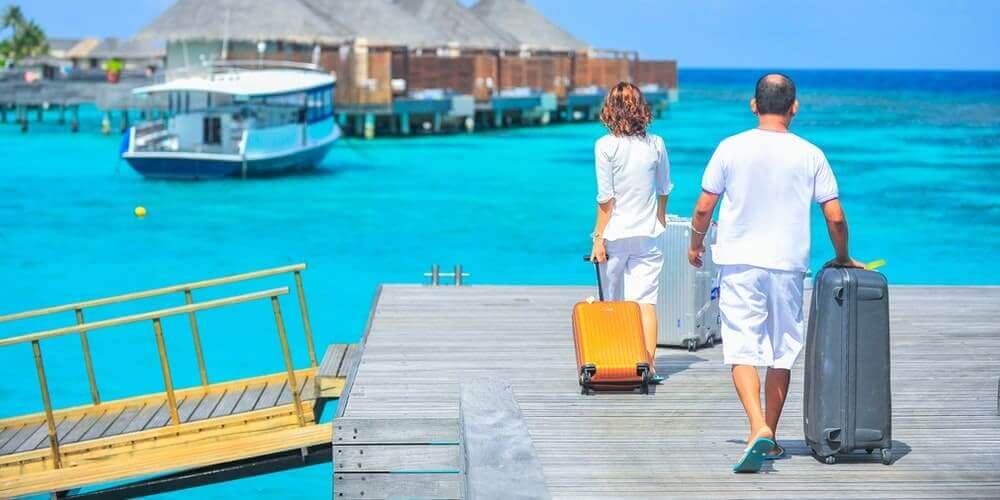Ecotourism is originated from two different words i.e. – ‘Eco system’ and ‘Tourism’. When we combine the both terms it is made Eco-tourism. To understand the concept of Eco tourism, first we have to understand our Ecosystem.

Eco system is defined as the system in which we live. An eco-system includes all the living things such as animals, plants and organisms in a given area interacting with each other and also with their non-living environments such as weather, sun, soil, earth, atmosphere is termed as eco system. But, there is no such specific and certain scale used to measure and explain an Eco system. Thus, the term “eco system” does not, definitely, agree to the terms “biome” or “ecological zone”, but may also refers to any functioning unit at any scale. It could be, for example the sea, a pond, a forest, the river, a biome or the whole biosphere. And, tourism means – ‘the activity in which one travels from one place to another place usually outside from his/her residence and stays there at least 24 hours but not more than consecutive year for the purpose of leisure, pleasure except remunerative one. This phenomenon is termed as tourism.’ Thus, a tourism which involves a visit to an Ecosystem is known as Eco tourism.
Eco tourism not only involves travel to natural areas, but also preserving them from harm or destruction. In a layman’s language Eco tourism is defined as –
Eco Tourism can be understood as a tourism activity which involves travel to natural areas, mainly for a purpose of experiencing wildlife and learning about the environment and focus on flora and fauna and promoting awareness of preservation of the environment. The recent development in the concept of eco tourism evolve with some new paradigm shift to more responsible form of tourism, such as sustainable tourism, community based tourism, and green tourism.
• Provides economic value to eco system services.
• A significant economic activity in pristine area.
• Helps to create income for the preservation of natural areas and endangered species
According to Hector Ceballos Lascurain: “ Eco tourism is a kind of activity that consists of travelling to mainly unperturbed or decontaminated natural areas with a particular objective of studying, appreciating and adoring the serene beauty and its flora and fauna, as well as any existing cultural demonstration of past and present, found in these areas”. Eco tourism is a form of tourism which involves travel to visit fragile, pure, clean, and unperturbed natural areas, intended as a low-impact. Its major purpose may be to educate the traveler, to directly benefit the economic development and political empowerment of local people and to provide funds for ecological conservation etc. The Eco Tourism Society of America defined eco tourism as: “Responsible travel to natural areas that helps to preserves the environment and also helps to enhance the well-being of local communities”. Thus we can conclude that eco tourism is promotion of reuse, recycle, water preservation, energy efficiency, and creation and development of jobs for local people.
Evolution of EcoTourism
In the late 70’s the world wide movement for environment protection and lowering the green house gases emission gave birth to the popularity of eco tourism. The recent development in the concept of eco tourism evolve with some new paradigm shift to more responsible form of tourism, such as sustainable tourism, community based tourism, and green tourism.
Since 1980 eco tourism has been observed as a crucial factor by environment lovers in the direction of environment protection and sustainable development, so that new generations may experience tourist destinations in an environmentally stable state and with a scope of learning and education which results in conservation and preservation of nature and culture while addressing concerns related to economic benefits of local community.
Characteristics of EcoTourism
There are various characteristics of eco-tourism are as following:
• Focuses small group of people travel to natural areas.
• Results in promoting environmental awareness among the tourist and locals.
• Ensures fiscal benefits for preservation of the area.
• Strengthen local communities.
• Respect local traditions and customs.
• Ensures protection of human rights and activities such as conservation of ecological and cultural sustainability through ecosystem protection.
Principles of Ecotourism
The principles of eco-tourism are as following:
• Adopt low-impact tourism activity that protects ecological natural areas.
• Highlights the biodiversity richness and their values.
• Build environmental and cultural awareness
• Encourage environmental conservation and cultural preservation.
• Encourage the sustainability of ecotourism enterprises and activities.
• Promote community participation..
• Provide employment opportunities to local people.
Importance and Significance of Ecotourism
Eco tourism provides essential economic benefits for conserving and strengthening the bio-cultural diversity and helps to preserve the natural and cultural heritage of Earth.
Here are few points in support of eco tourism.
• Helps to reduce threats to biodiversity.
• Encourage sustainable use of natural resources.
• Helps to generate income for local investors and residents
• Helps to generate direct income for the preservation of natural areas.
• Give economic value to eco system services.
• Important economic activity in natural areas.
Negative Side of EcoTourism
The concept of eco tourism can only be implemented
successfully if there is clear understanding of the positive.as well as negative impacts. Here we are discussing few impacts needs to be addressed otherwise they result in negative development.
1) The activities of tourist may be focused on sustainable basis but requirement of infrastructure development is something which certainly affects the environment adversely. As this is bit natural when a concept at the destination become popular the demand for such product will increase and thus require to add more infrastructural facilities to accommodate more tourist. To minimize the impact infrastructural development the concept of carrying capacity need to be followed in true letter and spirit.
2) Human beings also harm trees and other flora and fauna while camping or doing activities in the natural settings. Campers may snap twigs and branches off trees to light camp fires and tree trunks may be used as bill-boards for notices, hence a total damage to the area.
3) Leftover material including empty water bottles, food bags, aerosol bottles, exhausted batteries results in degradation of eco system and also endangers the life of animals if they consume these items.
4) Tourists sometimes try to feed the local animals in the tourist area and as result some of the animals become aggressive by the type of unhealthy food they are being fed, and in their attempts at grabbing food from tourists in picnic areas etc.
ECOTOURISM SEGMENTATION
Eco tourism is segmented into three different segments as depicted in the chart.
a. Wildlife
The exotic range of plant kingdom and animal kingdom in India is the reason for the fruitful development of Wildlife tourism in the nation. There are approximately 400 or more wildlife sanctuaries and approximately 99 national parks spread all over the country. These accommodate an estimate of over 350 species of mammals, 2100 types of birds, 350 varieties of reptiles and innumerable insects.
b. Botany
A botanical garden consists of plants, especially ferns and flowering plants. Varieties of plants are grown and displayed for the purposes of research and education. It also includes the observation of various forests. A lot of travelers come to India for such studies.
c. Geography
A snow peaked mountains, consisting of the Himalayas, Aravali ranges define the northern Indian subcontinent. The Thar Desert is the world’s seventh largest desert; it spreads over an area of western India. The Central Highlands comprises of three major plateaus such as the Malwa Plateau in the west, the Deccan Plateau in the south and the Chota Nagpur Plateau in the east. The Eastern Coastal Plain is a wide extend of land lying between the Eastern Ghats and the Bay of Bengal. It extends from Tamil Nadu in the south to West Bengal in the east.
India’s wetland biological community is generally divided from the cold and arid situated in Ladakh region of Jammu and Kashmir and others with moist atmosphere of peninsular India. The greater parts of the wetlands are straightforwardly connected to river networks.
All major rivers of India originate from one of the three main watersheds i.e.
(a) The Himalaya’s and Karakoram ranges
(b) The Vindhya and Satpura range in central India
(c) The Western Ghats in western India

ECOTOURISM IN INDIA
The geographical features of India are blessed with no. of tourist spots. Almost each and every region of the country is full with no. of places providing tourists a lot of options to explore Eco tourism spots. If we start wandering in Northern part of India the Monasteries and Himalayan glaciers of Ladakh are the major attractions or wandering through rich Coffee estate and world well known quiet and serene backwaters of Kerala in South or getting a charge out of the mountaineering in Kanchenjunga mountains in North-East or enjoying camel safari tour in Thar desert in Western part of the country, the opportunities for eco tourism spots are scattered all around. India is vast geographical area which provides extensive range of eco tourism opportunities in diverse natural and exotic settings. 103 national parks and 537 wildlife sanctuaries spreading across the length and breadth of country safeguarding the habitat of large number of flora and fauna also provides great scope for the eco tourism development. Besides, many of the dense forests, mountains, and rivers offer an extensive variety of Eco activities like Mountaineering, Rock Climbing, Trekking, Mountain Biking, Nature Walking, Wildlife Viewing and River Rafting.
1. Thenmala – The First Planned Eco tourism destination in India
Kerala – God’s Own Country is the first state who planned countries first eco tourism destination Thenmala. It is a small village, situated in the foot hills of the Western Ghat Mountains. It is 72 km away from Thiruvananthapuram, the capital of Kerala, the southernmost state of India.
The name Thenmala is made from two words – “Then” and ‘Mala” in local dialect “Then” means honey and “Mala” implies hillock so it means ‘honey hills’. The honey gathered from Thenmala forest zone is of very good quality and of enriched with high medicinal value because of the unique floristic composition of the forests.
1.1 Thenmala Wildlife Resource
The Shenduruney Wildlife Sanctuary is the imperative ecotourism asset of Thenmala in Kerala. This Wildlife Sanctuary is of around 100 sq km in range and occupies expansive supply of widely varied vegetation. The Shenduruny forest declared a wildlife sanctuary in year 1984. It got its name from endemic types of tree called Chenkuruny (Gluta travancoria).
IMPACTS OF ECOTOURISM
There are some positive or negative impacts of Eco tourism are as following:
Negative Impacts Positive Impacts
Source of conflict over control of land, assets and resources, and tourism profits. Economic Development: Tourism is currently world’s largest and fastest growing sector of economy and the largest source of foreign exchange.
Environmental degradation and Employment generation and income Displacement of people. opportunities for local communities
Disturbance to the Nature’s Fauna &
Flora. Environmental Protection: As nature becomes the source of employment and income for local people, they become more aware about the protection of natural and cultural assets in their region.
ECOTOURISM PLANNING
Eco tourism is the most promising and encouraging sustainable economic alternatives in bio diversity-rich developing countries.
• Tourism is one of the largest service industries in the world, according to the WTTC.
• Generating 3.4 trillion (approx.) dollars annually.
• Creating more than 200 million jobs every year.
• People want to make their vacations a chance to learn and want to experience a closer contact with nature and culture than the old sun-and-shoreline vacation.
• Dramatic increment is more in developing countries because of natural “untouched” regions.
• Local governments and organizations in charge of management of natural areas subject to eco tourism use, a sufficient approach and vital structure is fundamental to limit the potential dangers and to guarantee that preservation and monetary advantages are adequately accomplished.


